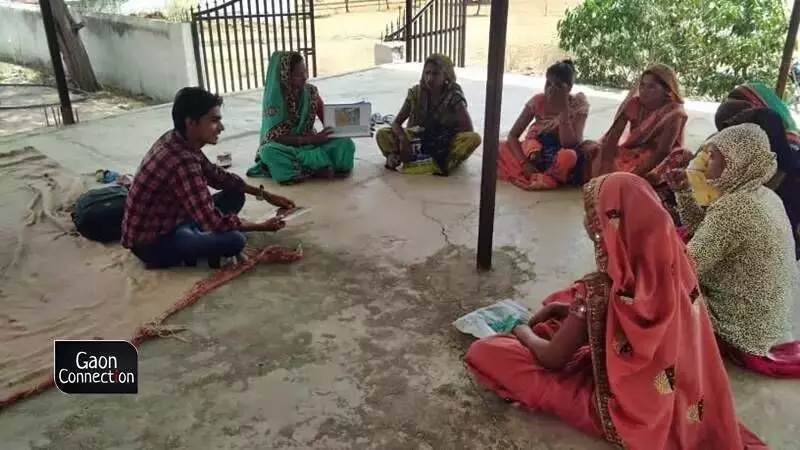A women-led initiative is helping villagers access healthcare, education and governance. This is being undertaken in ten blocks across ten districts in Madhya Pradesh.
The initiative is volunteer-based and it was introduced in the state by a non-governmental organisation Transform Rural India Foundation [TRIF] in 2018. The women volunteers, called Badlav Didis, are taking forward the initiative. TRIF works in tandem with district-level government agencies such as the education department, the health department, and the local panchayat office and this supports the Badlav Didis in fulfilling their roles more efficiently.
Although the Badlav Didis have no financial benefits, they continue to perform their duties. It helps them network and gather awareness which in turn helps them avail welfare services for themselves.
The project is implemented in the following districts — Jhabua (Petlawa block, Thandla block, Ranapur block), Dhar (Manawar block), Dindori (Amarpur block and Samnapur block), Mandla (Bichhiya block and Bijadandi block), Barwani(Barwani block and Rajpur block), Sagar (Rehli block), Dewas (Khategaon block), and Burhanpur (Kharknar block).
“We may not be paid for this, but our active involvement with the various departments helps us learn about government welfare schemes and avail of them,” Joshma Kanoje, a 35-year-old Badlaav Didi in the Matli village of Barwani district explained.

Although the Badlav Didis have no financial benefits, they continue to perform their duties. It helps them network and gather awareness which in turn helps them avail welfare services for themselves.
‘The vision for one’s village’
Anuradha, the district coordinator of TRIF explained how prior to the implementation of the project in the 10 districts a visioning exercise was conducted. The exercise was carried out with women-owned self-help groups (SHG) in the districts.
Also Read: Bijli sakhi, pashu sakhi, aajeevika sakhi – Uttar Pradesh’s cadre of rural women
“The women were asked what changes they wanted to see in their villages. What emerged was Atmanirbhar didi, Khushhaal gaon, Sukhi Parvivar [self-reliant women, happy village, happy families]. And, this is what we addressed through our three change vector models,” she told Gaon Connection.
Each village has six such didis — two for each sector (healthcare, governance and education)— selected on the basis of their interest and active participation in the rural affairs. Badlaav Didis were trained for over a week to make them understand their roles, prioritise the issues relevant to their village and then finally oversee the onground implementation.
The health change vectors were to mobilise the village folks for on-time vaccination of children and women and bust health-related myths through IEC [Information, Education, Communication]. TRIF had provided them with aids such as visual guidebooks and posters to raise awareness around maternal health and malnutrition.
The education change vectors are involved with the primary schools in their village where they not only keep a quality check on Mid Day Meals [MDM], ensure that teachers arrive on time, and also help the school staff reach out to the village community.
“The governance change vectors provide active participation in village meetings or gram sabhas to track the progress on solutions to identified issues, mobilise women panchayat members to attend these meetings, and follow up on documentation of various rural schemes,” TRIF functionary, Anuradha, explained
Also Read: A 36-day online training in agriculture has transformed farmer Renu Devi’s life. Here’s how
“The Badlaav Didis associated with governance are more aware about schemes like MGNREGA and PDS and keep checking in on the availability of work. They also know where to look up the information on government websites,” she added.
A few didis even volunteered for the recently concluded panchayat elections in Madhya Pradesh.
Reclaiming voices
Rama Kanoje, a 37-year-old resident of Matli village recalled the times when the local panchayat office was predominantly male dominated. In December last year, Kanoje along with a few other women insisted on selecting a woman as a replacement for another panchayat member, but the Sarpanch [panchayat head] didn’t pay heed.
Also Read: Madhya Pradesh: Rural learning centres help kids in Barwani stay in touch with education
“I walked off,” Rama recalled. “If they don’t listen and do whatever they feel like, why should wait around and listen to them,” she demanded. She said before she became a Badlav Didi, she would never have had the temerity to do something like this.
There are challenges, Anuradha, the TRIF functionary, admitted. One was to convince the women to work without monetary benefits. “But, so far they are driven through social recognition,” she said.
The other challenge was one of deep rooted patriarchy in villages.
“There was a lot of resistance in the beginning to women participating in the decision making process in the panchayats, etc. “But they did not give up and their contribution to decision making has increased now,” Anuradha said.
This story has been done as part of a partnership with Transform Rural India Foundation


















